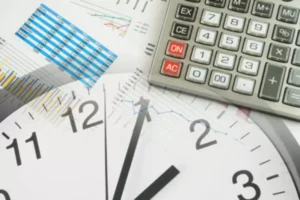
Each person should consult his or her own attorney, business advisor, or tax advisor with respect to matters referenced in this post. Bench assumes no liability for actions taken in reliance upon the information contained herein. But you still need to strike a balance that lets you live comfortably and doesn’t hurt your business.
When doing so, it’s best to work with a certified public accountant (CPA) or tax advisor who can provide guidance. You can use several factors when determining a reasonable salary for your position, such as your level of experience and your responsibilities. You should also research salaries for comparable positions to ensure that you’re within industry standards. Owner salaries and half of the FICA tax paid on them are tax deductible, which means they reduce the taxable income of the business.
How to pay yourself (by entity type)
They are considered pass-through entities for tax purposes, meaning the company’s income and/or losses are passed through to the owners’ personal tax returns. This structure offers business owners several tax advantages, including avoiding double taxation on business income. An owners draw is a money draw out to an owner from their business. This withdrawal of money can be taken out of the business without it being subject to taxes. Even though the company is NOT taxed at distribution, it still needs to be filed as income on personal tax returns. Plus, there are many tax filing rules for owner’s investment drawings depending on your business structure.
Havertz to Arsenal: Reasons Arteta is banking on switch from Chelsea No 9 to ‘left 8’ – The Athletic
Havertz to Arsenal: Reasons Arteta is banking on switch from Chelsea No 9 to ‘left 8’.
Posted: Thu, 22 Jun 2023 04:11:44 GMT [source]
Owners can also opt to take a regular salary instead of or in addition to an owners draw, and each method comes with certain tax implications for both the owner and the business. All S corporation owners must take salaries, as they are considered management employees. When a business is profitable, an S corporation owner can earn dividend distributions.
Salary method vs. draw method
Owner’s draws aren’t limited to cash withdrawals such as debiting from an ATM, transferring money between accounts online, or writing a paper check. For example, if your company has discount opportunities with vendors, your company can purchase the discounted goods and give them to you. However, the more an owner takes, the fewer funds the business has to operate.
Instead of having an account balance, the owner has a valuation of their stake in the company. They can make a withdrawal (owner’s draw) against the value of this stake to get cash for personal use. Owners can set up regular owner’s draws or just use them whenever the need (or want) arises. It’s a question many small business owners ask themselves on a regular basis, and for good reason! How you choose to pay yourself for your business can impact your company in important ways. In addition, you want to ensure you are taking the best approach for your unique financial situation.
The Salary Method
This way, you get a consistent paycheck and your accountant (or software) can withhold your taxes. If you pay payroll tax, consider taking a salary so your accountant/software can track what does nominal fee mean everyone’s taxes in one place. Figuring out how to pay yourself as a small business owner is one thing. There’s no one formula as businesses vary in industry, size and structure.
Does owner’s drawings reduce equity?
Owner's draws simply reduce the owner's equity as he recovers their initial investment or takes the profits out of the business. The key is to keep the business's finances totally separate from personal finances, so that the flow of money from the business to any personal account is clearly documented.
He decides to pay himself a fixed-base salary of $2,000 monthly as the company owner, but rather than do it via payroll, he collects payment through a check that his business writes. When Charlie’s shop is in its busy season, he writes himself an additional discretionary amount based on his business’s cash flow. Depending on how the Limited Liability Company (LLC) is structured, owners may take a draw in some cases. Rules regarding LLCs are state-specific, so it’s best to review your state’s laws if you are a member in an LLC. If you draw more than your business ownership or what your business is worth, you will be borrowing money from your business worth and creating a loan. Once you take out more than the business is worth, you can create tax complications.
How Does the Owner’s Draw Work?
The cash drawn out of the business bank account should be taken out of the profits after all business expenses are paid. It’s not a salary in the technical sense, but more of the owner’s equity in the business. Keep good financial records, recording each equity distribution in your accounting software so that, at the end of the year, it’s easy to file your personal income taxes. As we mentioned above, the salary method is the more straightforward way for business owners to pay themselves. How to pay yourself as a business owner depends upon the business structure and payment method. The owners of sole proprietorships, partnerships, and LLCs are considered self-employed.
What is an example of an owner’s draw?
Rather than classifying owner's draws as expenses, accountants consider them to be a distribution of profits. For example, if a company produces $100,000 in profit in one year, the owner may take a draw of $40,000 instead of taking a salary.

